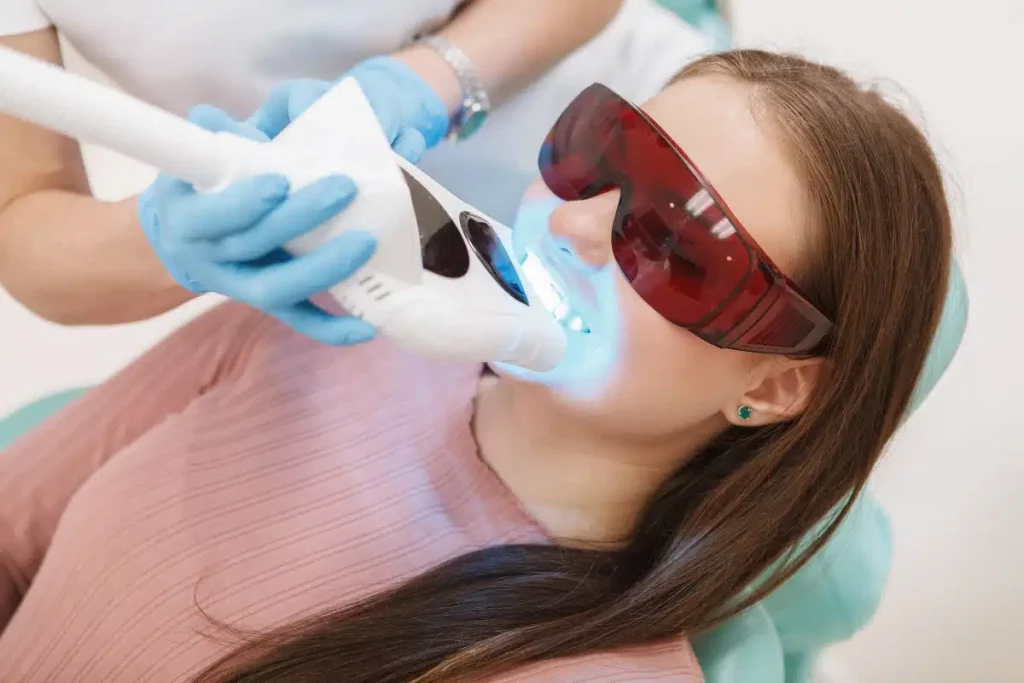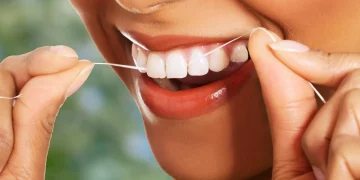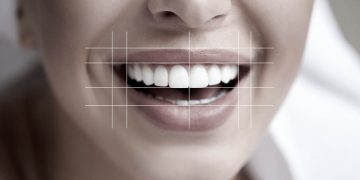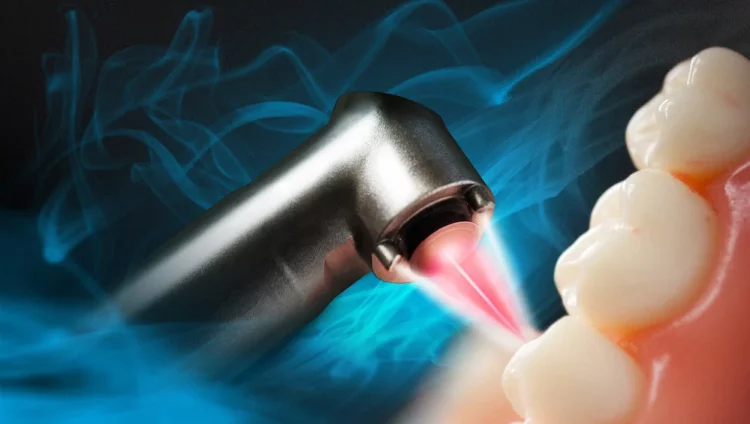Introduction
Laser dentistry has become a significant innovation in the field of dental care over the past few decades. It has revolutionized the way various dental procedures are performed, offering an alternative to traditional drills and methods. But what exactly is laser dentistry? Is it safe, and how effective is it for treating different dental problems? This article explores the safety and effectiveness of laser dentistry, as well as the range of dental issues it can address.
1. Understanding Laser Dentistry
1.1 What is Laser Dentistry?
Laser dentistry involves the use of lasers to perform dental procedures. The laser (which stands for “Light Amplification by Stimulated Emission of Radiation”) produces a focused beam of light that can be used to cut or remove tissue, or it can alter tissues with precision. Lasers can be used in various types of dental treatments, including soft tissue and hard tissue procedures.
1.2 Types of Dental Lasers
There are two main types of dental lasers:
- Hard Tissue Lasers: These lasers are used for procedures involving teeth, such as removing or reshaping teeth. They are ideal for procedures like cavity preparation and hard tissue surgery.
- Soft Tissue Lasers: These lasers are used for procedures involving gums and soft tissues. They are often used in periodontal treatments, biopsies, and gum contouring.
2. How Does Laser Dentistry Work?
2.1 Mechanism of Action
The laser light used in dental procedures has a wavelength that interacts with different types of tissues. Hard tissue lasers typically emit a wavelength that is absorbed by the hydroxyapatite (the mineral structure in teeth), while soft tissue lasers are absorbed by water and pigment found in soft tissues like the gums.
2.2 How Lasers Replace Traditional Tools
Laser dentistry offers numerous advantages over traditional dental methods. Instead of using drills, which can cause vibrations and discomfort, lasers are more precise, leading to less damage to surrounding tissues. They also tend to cause less bleeding and swelling, contributing to a faster healing process.
3. Safety of Laser Dentistry
3.1 Is Laser Dentistry Safe?
Laser dentistry is generally considered safe when used by a trained and qualified professional. The precision of lasers allows for more controlled procedures, minimizing risks associated with traditional dental treatments. However, safety also depends on factors such as the type of laser used, the condition of the patient’s teeth and gums, and the experience of the dentist.
3.2 Potential Risks and Side Effects
While rare, some side effects may occur. These include:
- Sensitivity: Some patients experience tooth sensitivity after a laser procedure, but it typically resolves within a few days.
- Gum Discomfort: Following soft tissue procedures, patients might experience some discomfort, which usually subsides quickly.
- Infection: As with any dental procedure, there is a slight risk of infection, but lasers have been shown to sterilize the treated area, lowering this risk significantly.
3.3 Who Should Avoid Laser Dentistry?
Although laser dentistry is safe for most people, some conditions may make it less suitable, such as:
- Pregnant Women: Certain types of lasers might not be recommended during pregnancy due to unknown effects on fetal development.
- Patients with Certain Health Conditions: People with certain heart conditions or who are taking medications like blood thinners may need to avoid laser treatments, as the procedure could cause complications.
4. Advantages of Laser Dentistry
4.1 Precision and Minimal Damage
One of the biggest advantages of laser dentistry is its precision. The laser beam can target the exact area that needs treatment, causing minimal damage to surrounding tissues. This is especially beneficial for sensitive areas in the mouth.
4.2 Reduced Pain and Discomfort
Many patients report less pain and discomfort with laser treatments compared to traditional methods. Laser procedures often don’t require anesthesia, or only a minimal amount, leading to a more comfortable experience.
4.3 Faster Healing Times
Laser dentistry is associated with faster recovery times. Since lasers promote coagulation of blood vessels during soft tissue procedures, there is less bleeding, leading to quicker healing.
4.4 Reduced Risk of Infection
The heat produced by the laser sterilizes the area being treated, reducing the risk of infection post-procedure.
5. Dental Issues That Laser Dentistry Can Treat
5.1 Treating Cavities
Hard tissue lasers can be used to remove decayed tooth material and prepare teeth for filling. This method is less invasive and often doesn’t require the use of a drill, which can cause anxiety in some patients.
5.2 Gum Disease Treatment
Soft tissue lasers are frequently used in the treatment of gum disease. Laser therapy can remove infected tissue and promote the regeneration of healthy tissue. The laser can also target the bacteria that cause gum disease without harming healthy tissue.
5.3 Gum Reshaping
Laser dentistry can be used to reshape the gums for cosmetic reasons or to correct issues like a “gummy smile” (where too much of the gum line is visible when smiling).
5.4 Teeth Whitening
Some laser systems are used to accelerate teeth whitening procedures. The laser activates the whitening gel, speeding up the process and often resulting in a brighter smile.
5.5 Frenectomy
A frenectomy is a procedure that involves removing or altering the frenulum, the small piece of tissue that connects the lip or tongue to the mouth. This can be done using a soft tissue laser and is often used to treat tongue-tie in infants or adults.
5.6 Biopsies and Lesion Removal
Lasers can be used to remove suspicious lesions or perform biopsies with high precision. The laser also minimizes bleeding and discomfort during the procedure.

6. Laser Dentistry vs. Traditional Dentistry: A Comparison
6.1 Pain and Anesthesia
While traditional methods often require local anesthesia to numb the area being treated, laser procedures may reduce the need for anesthesia or only require a minimal amount. This results in a more comfortable experience for the patient.
6.2 Healing Time
Laser dentistry typically results in faster recovery times than traditional procedures. This is because the laser promotes coagulation of blood vessels, which reduces bleeding and helps the body heal more efficiently.
6.3 Cost Considerations
Laser dentistry can sometimes be more expensive than traditional methods due to the advanced technology involved. However, the benefits—such as reduced recovery time and less need for anesthesia—may outweigh the initial cost for some patients.
7. The Future of Laser Dentistry
7.1 Advancements in Technology
As laser technology continues to evolve, it’s likely that the applications for laser dentistry will expand. New types of lasers and improved techniques are being developed that could make laser dentistry even more effective and accessible for a broader range of dental issues.
7.2 Wider Adoption and Accessibility
As more dental practitioners become trained in laser techniques and as the cost of laser equipment decreases, laser dentistry may become more common in dental offices worldwide.
Conclusion
Laser dentistry offers a modern, effective, and often less invasive approach to dental care. Its precision, reduced pain, faster healing, and ability to treat a wide range of dental issues make it an appealing option for many patients. While it’s not suitable for everyone, laser dentistry continues to gain popularity for its many benefits. If you’re considering laser treatment for your dental issues, consult with a qualified dentist to determine if it’s the right option for you.













































Discussion about this post